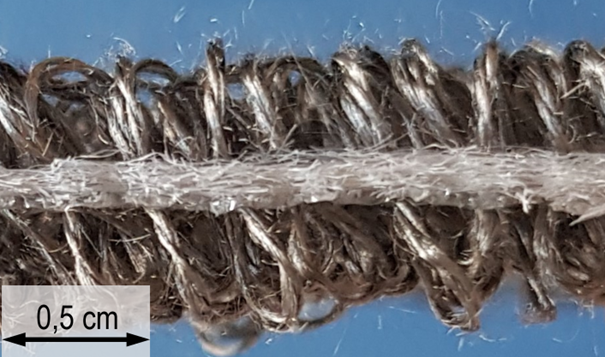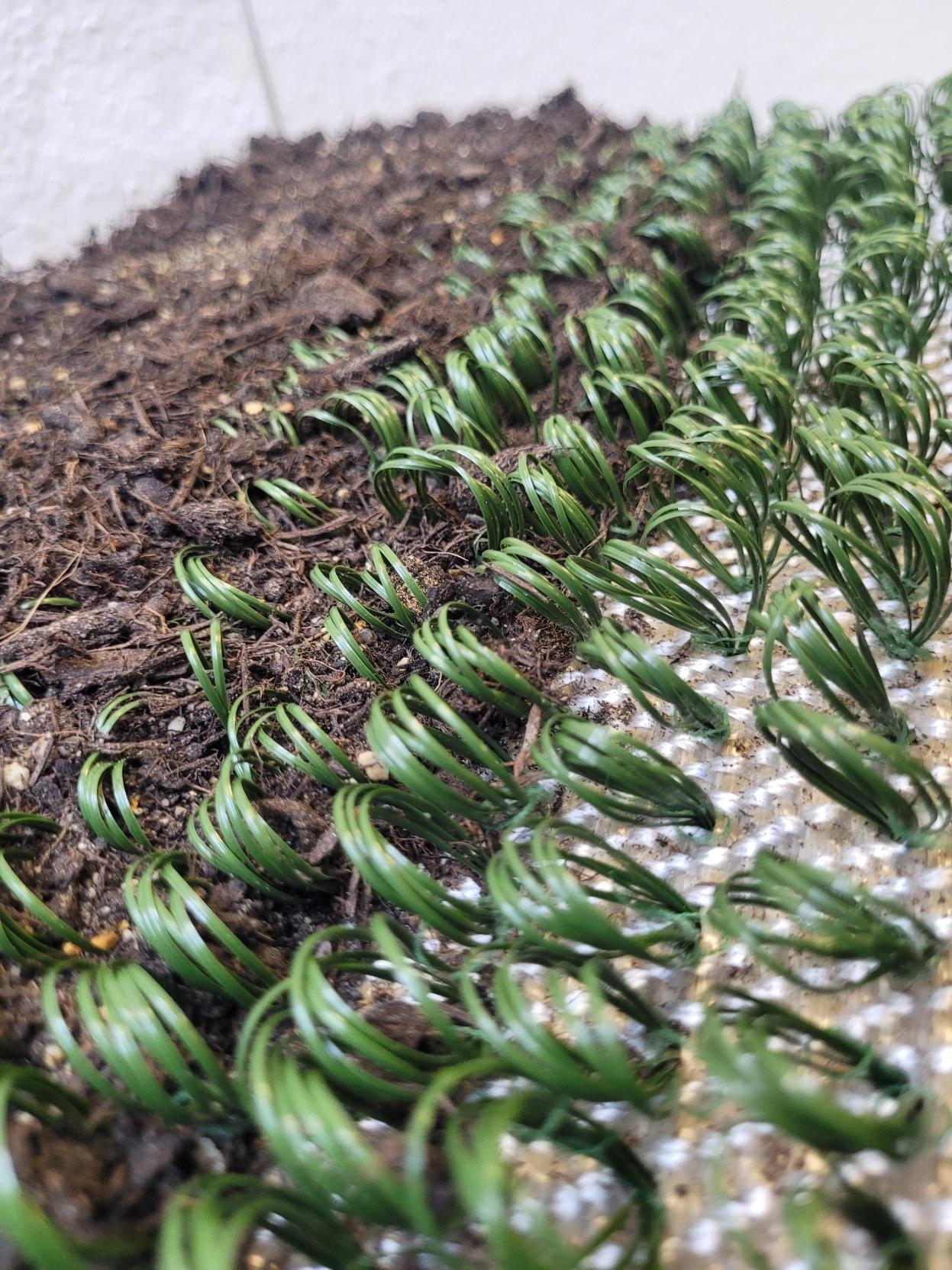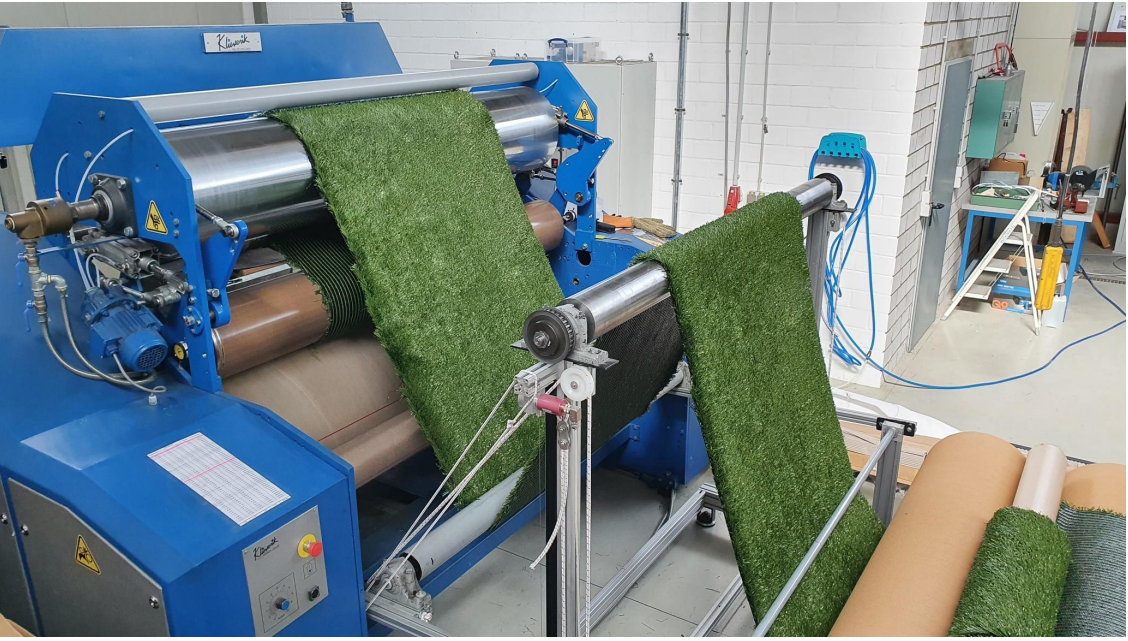Bio-based artificial turf
Description
Bio-based artificial turf systems reduce greenhouse gas emissions by 133,390 tons of CO2 equivalent (based on new installations across Europe in the reference year 2023) due to the use of bio-based materials for the pile material and thermal integration of the pile material into the carrier. A bio-based artificial turf, made from rapeseed oil, was developed as part of the BioTexFuture innovation area BMBF (031B1213A). In order to reduce microplastic emissions, which are unavoidable in today's artificial turf systems due to the stabilizing infill granules, BioTurf uses a second yarn that is structured and integrated in such a way that it meets the elastic properties of a FIFA-certified standard. A further step towards sustainability is the elimination of the latex bond between the tufted pile yarns and the textile backing. Thermobonding (see photo) offers a technical solution here, which also saves the energy-intensive drying of the latex. The result is an artificial turf that consists of one polymer group for better recycling, contains no microplastics and is made from renewable resources.
Funding program: BioTexFuture 031B1213A
Address
TFI - Institut für Bodensysteme an der RWTH Aachen e.V.
Charlottenburger Allee 41
52068 Aachen
Germany
Telephone+49 241 9679163
Fax+49 241 9679200
Discover more from us


